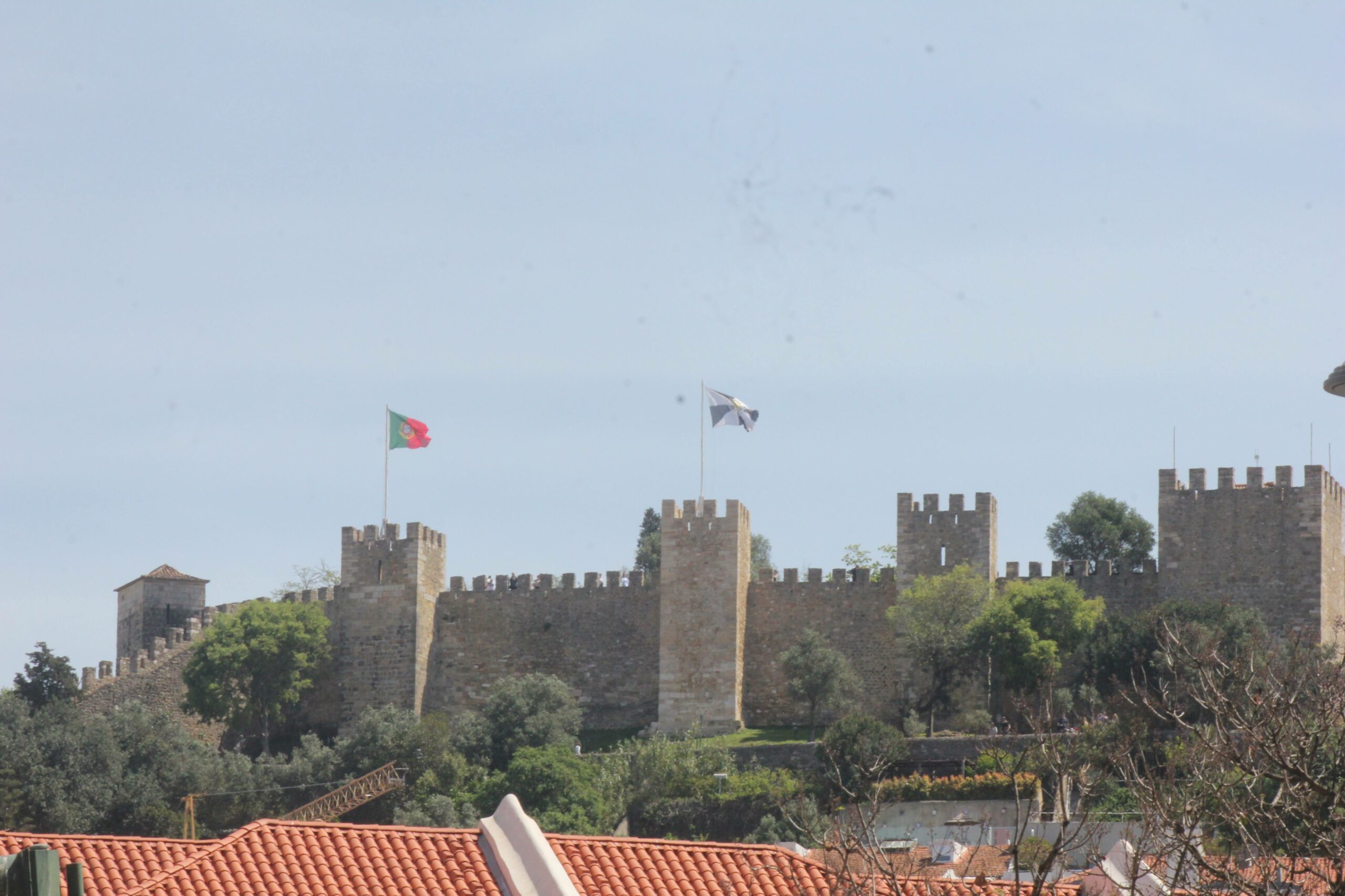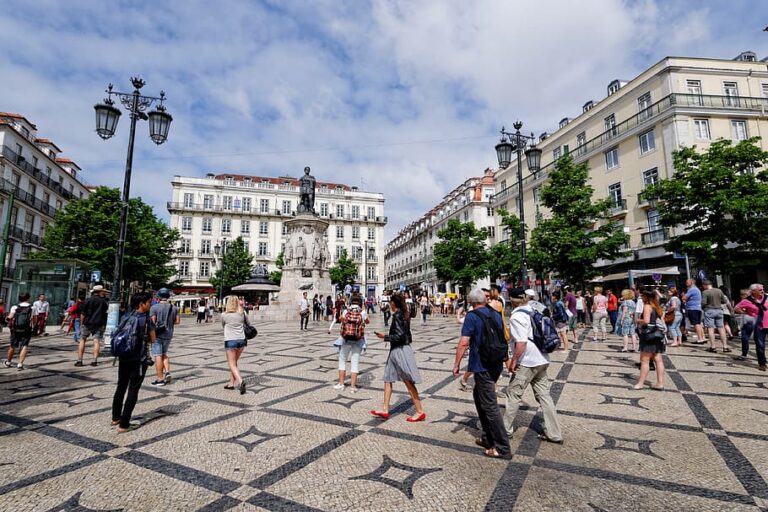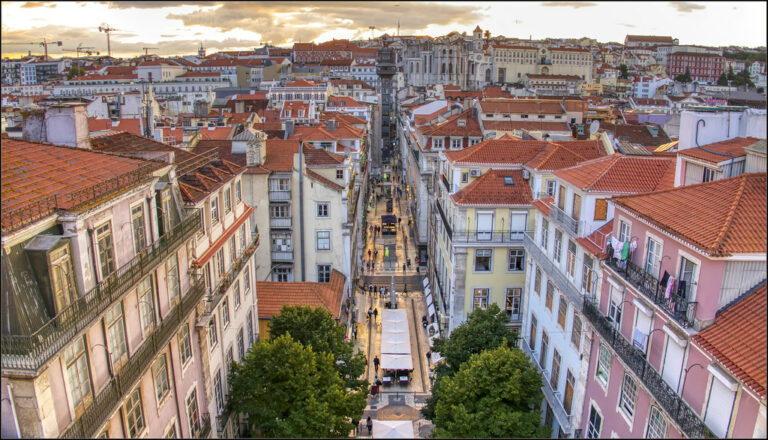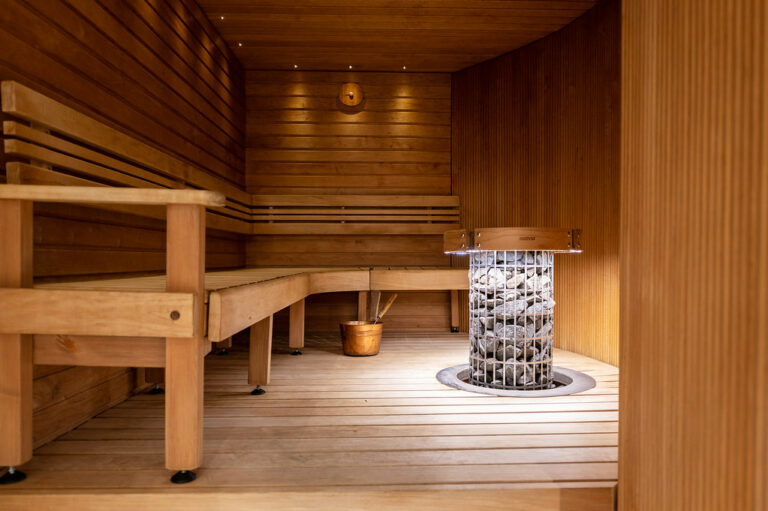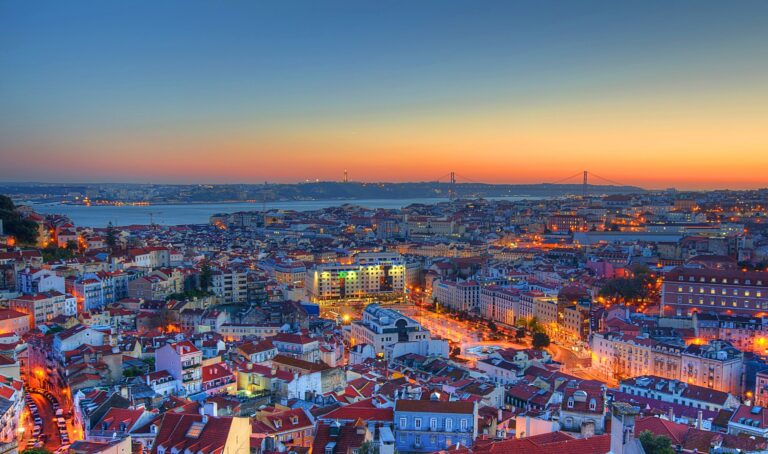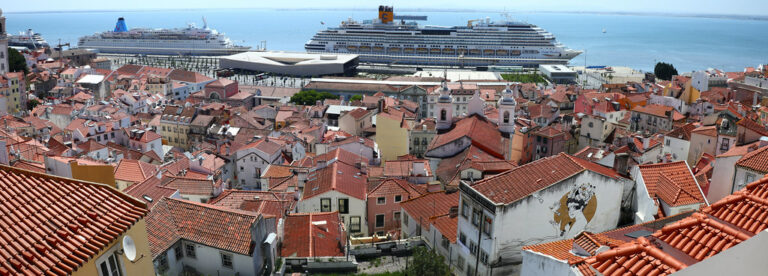Exploring the Castles in Lisbon and the surrounding area is like a journey through time in the Portuguese capital.
These castles and palaces have a captivating charm, offer a vibrant culture, and are close to the city.
Hence, they are some of the major attractions to explore. Journey with me to step back in time ⌚ to make your visit to Lisbon memorable.
Castelo de São Jorge

If you are in Lisbon, the first Portuguese castle you should visit is Castelo de São Jorge, also known as Saint George’s Castle.
The stronghold is the eleventh tower, dating back to the 11th century, and is a display of the Moorish military defense of the time.
The medieval castle is on a hilltop in the center of Lisbon. It is an iconic landmark offering panoramic views of the historic neighborhoods, the Tagus River, and the 25th April Bridge.
Hot Tip🔥: Before you start your day of exploring, enjoy some fresh bread or pastries at one of these bakeries in Lisbon.
The Easy Lisbon Quiz
Ready to test your Lisbon knowledge?
I’ve made an easy Lisbon quiz with 5 questions. Let’s see if you can get them right. 🤞
Belem Tower
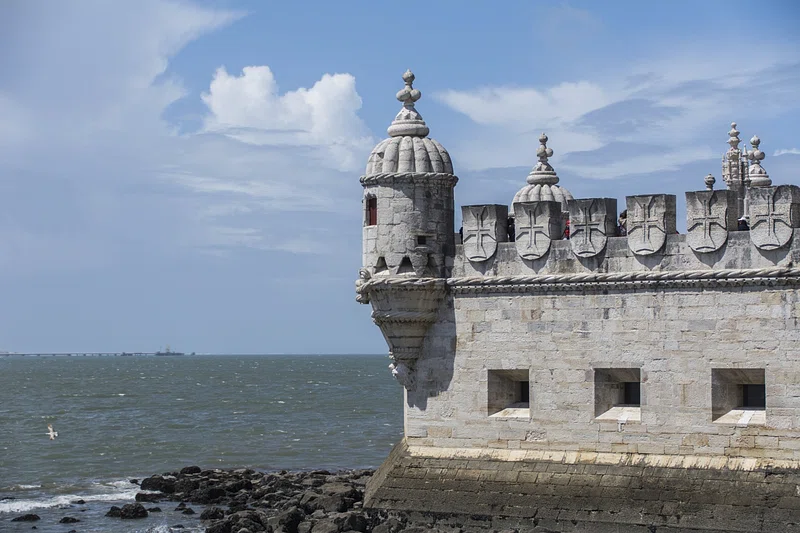
You will notice the picture of Torre Belem, better known as the Belem Tower, throughout the city.
The 16th-century structure resembles a Moorish castle with watch towers along the Tagus Rivers. It was used to defend the harbor from seagoing raiders.
As the Portuguese explorations began in the 16th century, the Belem Tower was the last thing the sailors saw leaving Lisbon and the first thing they saw when returning.
The white-washed castle has a rich history, and the inside and outside have stonework themes in Manueline style.
Hot Tip🔥: The Belem district has a lot of attractions to explore, including the famous Pasteis de Belem, to enjoy a traditional Portuguese custard tart.
The Castle of The Moors
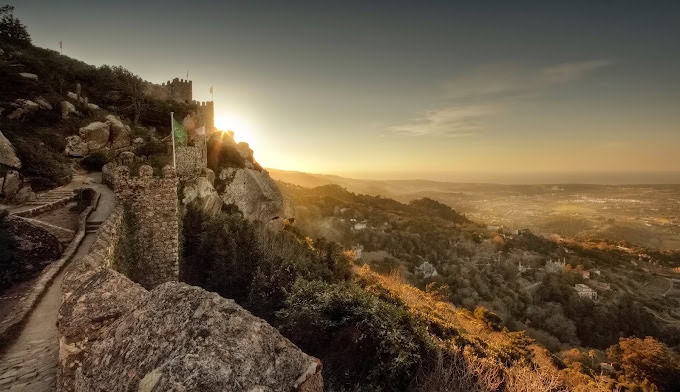
The Castle of the Moors is a worthy visit to Sintra. It is, historically speaking, the most visited castle and an important one in Portugal.
Castelo dos Mouros is named after the Moors, who built it in the 8th century. The Christians later took over during the Reconquista. It was heavily damaged in the 1754 earthquake.
Limited restoration took place, but it had high walls and ramparts in its glory days. Today, it is mostly ruins, and you can climb to the battlements to see the stunning views of Sintra.
Hot Tip🔥: Check out how to reach Sintra from Lisbon, as there are loads more to explore in this fairy-tale town.
Planning On Going To Lisbon?
I’ve created a trip planner where you enter the number of days you’re going and what activities you want to do.
Based on your input, you then get an entire vacation planned with ideas.

Leiria Castle
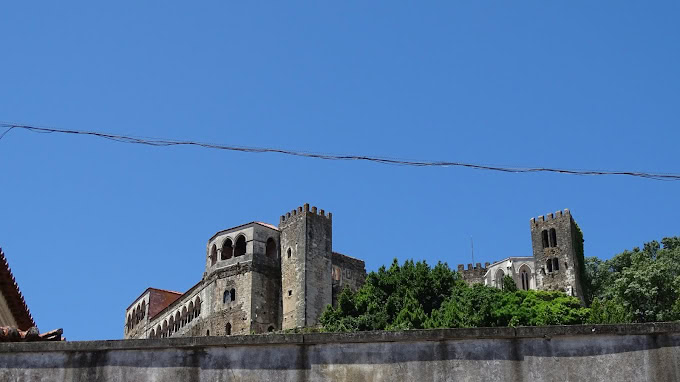
While not in Lisbon, Leiria Castle remains a landmark on a hill overlooking the city. The charming castle does not resemble a fairy-tale castle but has beautiful architecture. The colored tile roof with arched windows stands out.
Once you enter the medieval walls, you will find the Church of Nossa Senhora de Pena and a royal residence. Castelo de Leiria was constructed in the 11th century and destroyed by looters.
Reaching the city of Leiria takes about a 1.5-hour drive by car.
Hot Tip🔥: Did you know there are some great spots around Lisbon to visit? Check them out here to make your vacation a memorable one.
Almourol Castle
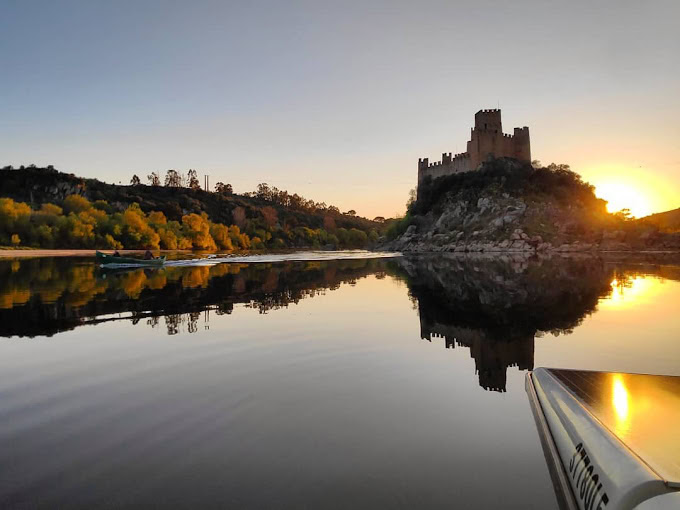
The Almourol Castle sits on a granite hill on a small island in the Tagus River.
It is believed to stand on a Roman ruin, but it is unclear which invading force remodeled it. The Almourol Castle walls are an excellent example of medieval architecture associated with the Knights Templar.
At the time, it was a central defensive fortress that divided Portugal’s Moorish and Christian sections. It was damaged during the 18th-century earthquake and was restored.
Hot Tip🔥: The best way to reach the Castle of Almourol is by train, which takes around 1h56m. Then you must take a small boat ⛴ to reach the castle.
Óbidos Castle
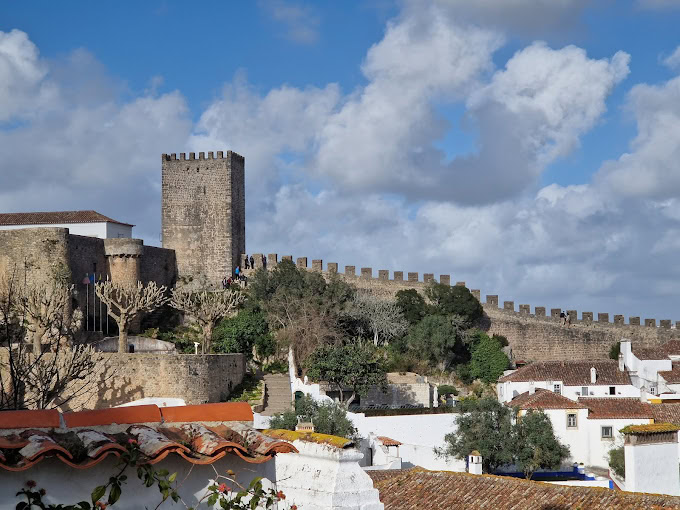
At the center of Obidos, you find this iconic castle, Castelo de Obidos, on top of a hill with breathtaking views.
It is one of many beautiful castles in Lisbon’s surroundings. Óbidos Castle dates back to the 12th century. The fortified castle is known as the wedding present, as the king presented it to his bride in 1282.
You can walk around the Óbidos Castle walls with high towers and an enclosed courtyard. While it is not open to the public as it is now a hotel, some areas you can visit are free.
Explore the enchanting gardens, terrace, Cerca courtyard, and Belvedere. Learn how to reach Obidos and what you can do here.
Here are the best things to do in Lisbon In July 2024
I’ll send you a list of the best things to do in July and every month moving forward from today.
It’ll be based on my personal experience of living and traveling around Lisbon. A lot of hidden gems.
Castle of Evoramonte
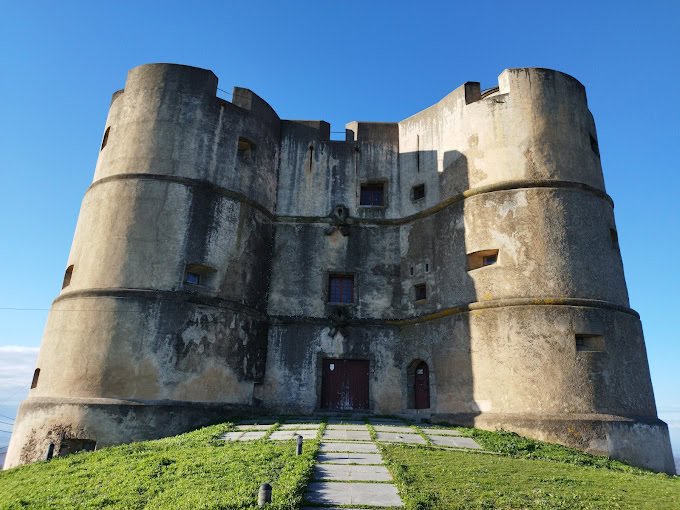
Another one of the magnificent castles around Lisbon is the Castle of Evoramonte.
The overwhelming structure looks like it is worked in layers, and development started in the 14th century.
The rectangular castle with round towers is found on a slope with rope hitches in the facade emerging from the Brganca royal family.
The castle is famous and was the place where the treaty in 1834 ended the internal wars.
Guimarães Castle
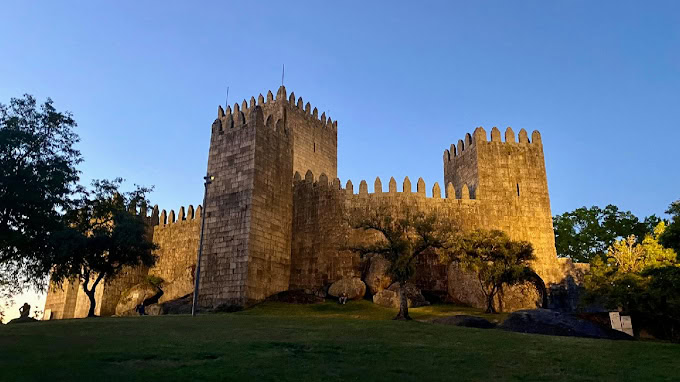
Guimarães Castle is considered the most significant medieval fortress in northern Portugal. Its most striking feature is the walls shaped like a pentagram, with eight rectangular crenelated towers.
Constructed in the 10th century, it later became the official royal residence of Count D Henrique, the father of the first king of Portugal, Afonso Henriques.
The fortress survived the Battle of São Mamede in 1128, which resulted in Afonso’s victory and began an independent Portugal.
Since then, the castle has been referred to as the birthplace of the Portuguese nation. It is among the top castles in Lisbon, Portugal.
Tomar Castle
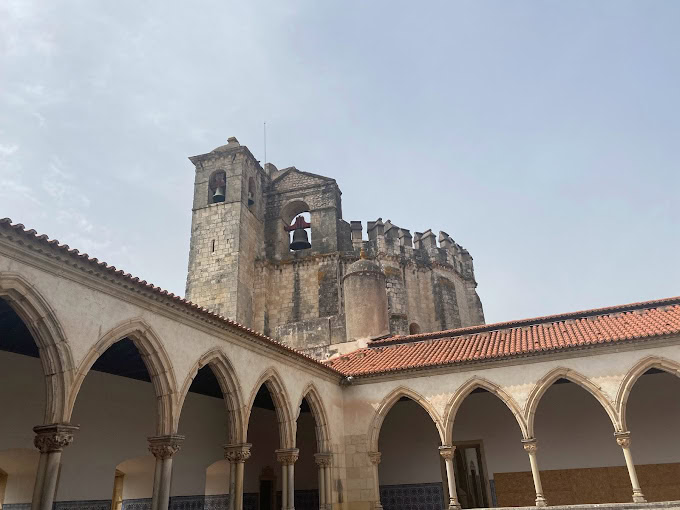
Castillo de Tomar, once a stronghold of the Knights Knight, is also a monastery built in the twelfth century.
Due to the integration of uniquely shaped towers, it is considered one of the most renowned castles in Portugal. Its original purpose was to defend Portuguese territory from the invasion of Moors (known in Iberia as Moors).
In 1312, the Knights were expelled from Europe, and much later, this fortress became the residence of King Manuel of Portugal.
The king’s name has been associated with the most significant alterations in the castle’s design when elaborate decorations in the Manueline style were added.
Pena Palace – Pena National Palace

The Pena Palace is like something out of a fairy tale. Situated atop a hill in the Sintra Mountains near Lisbon, this castle stands out with its extravagant and opulent design.
Brightly colored turrets emerge from the lush green forest, showcasing a mesmerizing blend of architectural styles, including Neo-Gothic, Neo-Renaissance, Neo-Islamic, and Neo-Manueline.
The Pena Palace, also known as the Feather Palace, served as a summer retreat for the Portuguese royal family. Its striking appearance is believed to have inspired Walt Disney’s famous Disneyland castle.
You can explore the Pena Palace and its grounds, delving into the area’s rich history and heritage. But there is a lot more to do in Sintra, so check out all the things you can do while here.
National Palace Of Sintra
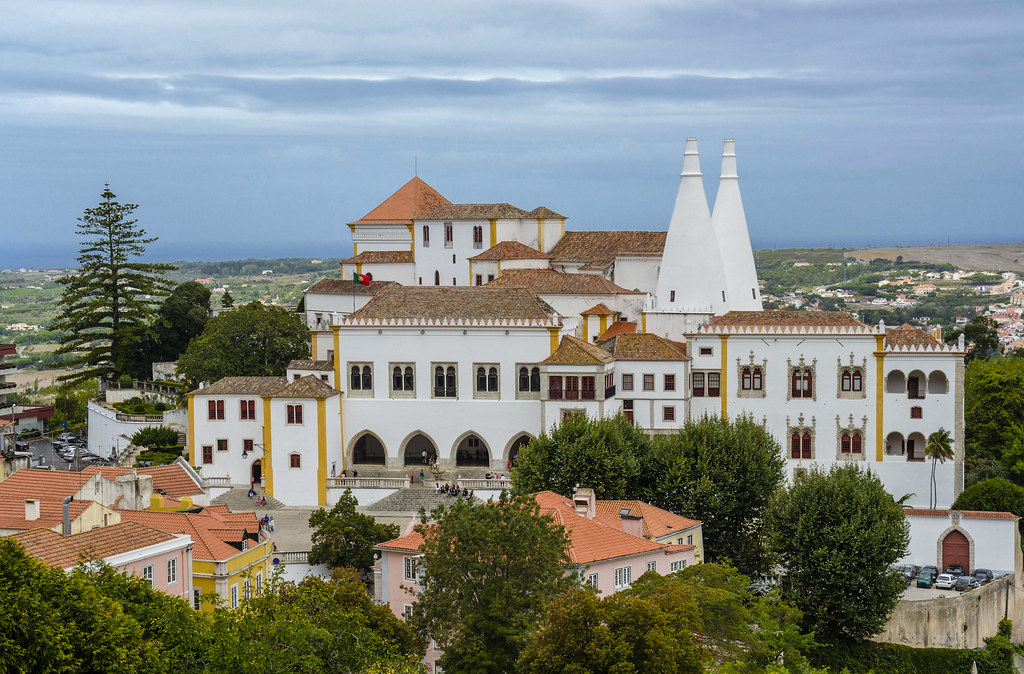
The royal palace, one of Portugal’s oldest palaces, stands prominently in the heart of Sintra, easily identifiable by its towering conical chimneys.
This iconic medieval structure was initially constructed in the 9th century as a residence for Moorish governors. During Portugal’s monarchy, it transformed into the royal home of King John I of Portugal.
Today, you can wander through the palace’s stunning rooms, including the Sala dos Brasões, renowned for its exceptional tile panels that illustrate scenes from historical imperial life.
National Palace Of Queluz
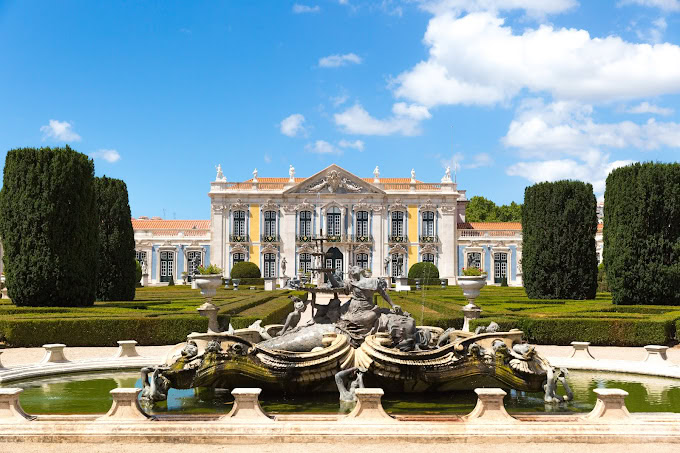
Nestled between Sintra and Lisbon city center, the National Palace of Queluz is renowned as one of Portugal’s most romantic palaces.
Built-in the 18th century with prominent Portuguese influences, it served as the summer residence for King Pedro III of Portugal and Queen Maria I.
The palace is celebrated for its magnificent architecture and beautifully landscaped gardens, which reflect the evolving tastes of the Court and incorporate elements of Baroque, Rococo, and Neoclassical design.
You can explore the grounds and experience a slice of life as 18th-century royalty.
Ajuda National Palace
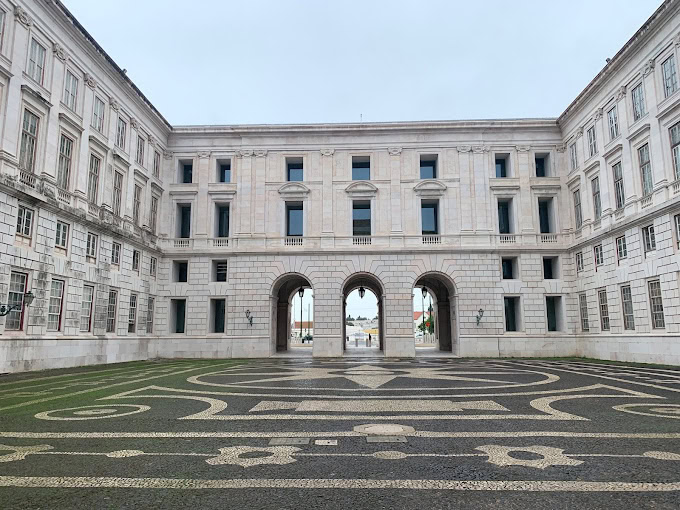
They never departed after the royal family moved into the Ajuda National Palace in the mid-1800s. A single glance reveals why this palace held such immense imperial allure.
Constructed after an earthquake demolished the former official residence, Ribeira Palace, the Ajuda National Palace stands as one of the city’s most stunning towers.
Its early Neoclassical exterior envelops opulent Baroque interiors and iconic rooms, which visitors can explore through guided tours.
Today, the palace is a museum showcasing significant collections of decorative arts dating back to the 15th century.
Belém Palace
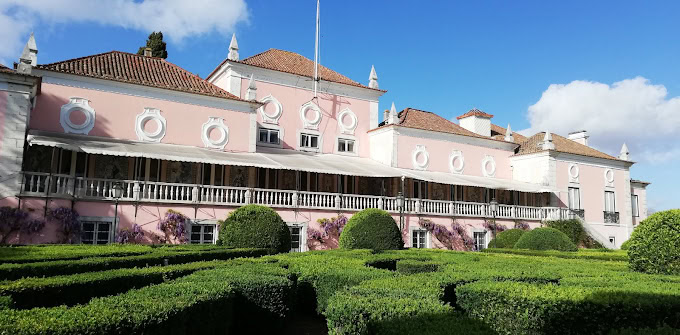
Just a short walk away lies Belém Palace. It was once home to royals such as John V of Portugal and Joseph I of Portugal. Its eye-catching pink façade draws the attention of all who pass by.
The palace is complemented by meticulously maintained gardens and luxurious interiors that exude grandeur. Since the monarchy’s abolition in 1910, the palace has served as the official residence of the President of the Republic.
Though it remains a working residence with limited opening times, visitors can book a tour on Saturdays or explore the Presidency Museum, which is open daily except Mondays.
The Advanced Lisbon Quiz
You’re now at the advanced Lisbon quiz with more difficult questions. No one gets every question right, so don’t beat yourself up on it. Good luck.
Wrap-Up: Palaces and Castles in Lisbon
Lisbon and its surrounding areas are home to a fascinating array of castles and palaces that glimpse Portugal’s rich history.
From the iconic Castelo de São Jorge in the heart of Lisbon to the picturesque Belem Tower along the Tagus River, these historic landmarks offer a unique opportunity to step back in time and immerse yourself in the country’s medieval past.
Whether exploring the ruins of the Castle of the Moors in Sintra or admiring the architectural beauty of Leiria Castle, each site has its own story to tell.
These majestic castles are a testament to Portugal’s historical significance and offer breathtaking views and a chance to experience the country’s vibrant culture.
